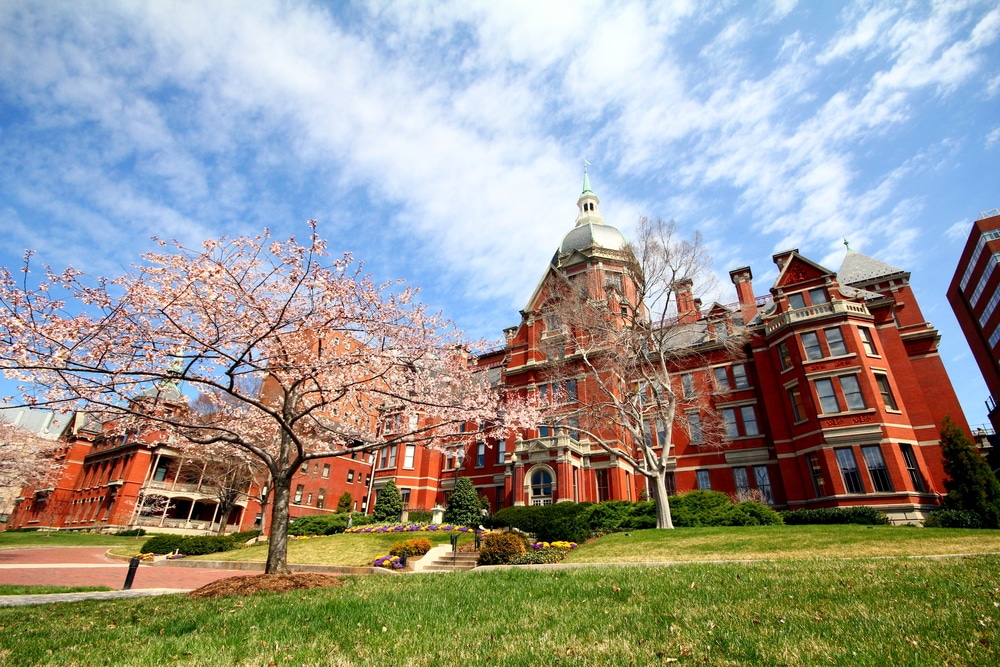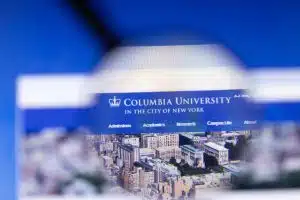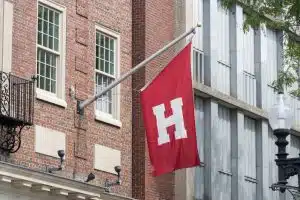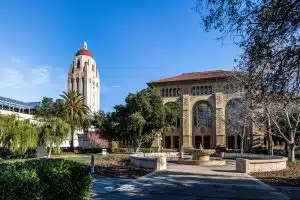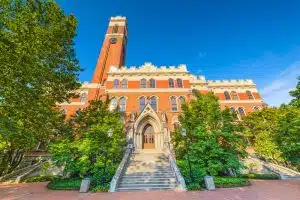Johns Hopkins Freshman Class Size: A Comprehensive Look
Deciding where to attend college is no small matter. The factors are myriad: reputation, location, curriculum, extracurricular activities, and class sizes. In this comprehensive review, we deeply dive into Johns Hopkins University with a detailed look at its freshman class size.
Understanding Johns Hopkins University
Located in Baltimore, Maryland, Johns Hopkins University is one of the most prestigious education institutions in the United States. It’s renowned for its vital programs in various areas, such as the Sciences, Arts, and Humanities.
Regarding higher education, few institutions can match the rich history and reputation of Johns Hopkins University. Founded in 1876, the university was named after its benefactor, Johns Hopkins. Hopkins, a Baltimore entrepreneur and philanthropist, left a staggering $7 million in his will to fund the creation of the university and the Johns Hopkins Hospital. This colossal gift, especially during that time, laid the foundation for the first research university in the United States.
Over the years, Johns Hopkins University has consistently maintained its status as a leading academic institution. Its commitment to excellence in research and development has attracted students and faculty members worldwide. The university’s faculty comprises distinguished scholars and experts in their respective fields, ensuring students receive a world-class education.
History and Reputation of Johns Hopkins University
Founded in 1876, Johns Hopkins University was named after its benefactor, Johns Hopkins. Johns Hopkins, a Baltimore entrepreneur and philanthropist, left $7 million in his will to fund the creation of the university and the Johns Hopkins Hospital, a colossal gift during that time. The university can rightly boast of being the first research university in the United States.
Over the years, Johns Hopkins University has maintained its status as a leading academic institution. Its reputation for excellence in research and development has attracted students and faculty members worldwide. The university’s commitment to innovation and discovery has led to groundbreaking advancements in various fields, including medicine, engineering, social sciences, and the arts.
Johns Hopkins University has also been forefront of medical research and healthcare. The renowned Johns Hopkins Hospital, affiliated with the university, has consistently been ranked among the top hospitals in the United States. This close partnership between the university and the hospital has created a unique environment where students can learn from and collaborate with leading medical professionals.
The Campus and Its Facilities
The Johns Hopkins Homewood Campus spreads over 140 acres in the northern part of Baltimore. Its beautiful Georgian-style buildings provide a serene environment conducive to scholarly pursuit. The campus is aesthetically pleasing and designed to meet the needs of students and faculty.
When it comes to facilities, Johns Hopkins University spares no expense. The campus is equipped with state-of-the-art facilities to support research and learning. From large, modern classrooms with the latest technology to well-equipped labs where groundbreaking experiments occur, students can access the tools they need to excel in their studies. The spacious library is a treasure trove of knowledge, housing an extensive collection of books, journals, and digital resources.
Life at Johns Hopkins goes beyond academics. The university recognizes the importance of a well-rounded education and provides various athletic facilities for students to stay active and healthy. Whether it’s the state-of-the-art gymnasium, the Olympic-sized swimming pool, or the numerous sports fields, there is something for everyone to enjoy.
Furthermore, the campus offers a vibrant social scene with numerous clubs, organizations, and events catering to various interests. Students can engage in extracurricular activities, form lasting friendships, and develop leadership skills.
The Freshman Class Size: An Overview
One of the things that makes Johns Hopkins stand out among its Ivy League equivalents is its manageable class size. The university strongly believes in maintaining a smaller class size to enhance teaching and learning.
The freshman class size at Johns Hopkins is carefully determined, considering various factors contributing to a rich and engaging academic environment.
Johns Hopkins University extended admission offers to 1,592 students from 47 U.S. states, 39 different countries, and Washington, D.C., Puerto Rico, and Guam in the Regular Decision group for the Class of 2027.
Factors Influencing Class Size
Several factors influence the class size at Johns Hopkins. But, more often than not, the university’s commitment to providing personalized and interactive learning experiences determines the class sizes.
The availability of faculty members plays a crucial role in determining class size. Johns Hopkins ensures that there is a sufficient number of highly qualified professors to meet the needs of the students.
Space constraints also come into play when determining class size. The university strives to maintain a comfortable and conducive learning environment, so class sizes must be adjusted accordingly.
Additionally, the specific demands of courses play a role in class size determination. Systems requiring more hands-on activities or discussions may have smaller class sizes to facilitate student engagement.
Smaller class sizes facilitate one-on-one interactions and foster a sense of camaraderie among students. It also allows faculty members to cater to the individual needs of their students, providing personalized attention and support.
Comparing Class Sizes Over the Years
In recent decades, Johns Hopkins has consistently maintained an average freshman class size of approximately 1300 students. This number has slightly fluctuated over the years, depending on the number of applications received and the percentage of admitted students who decide to enroll.
Comparatively, in the late 20th century, the freshman class size was somewhat smaller, reflecting the university’s growth and the general trend toward increased university enrollment nationwide.
Despite these fluctuations, Johns Hopkins remains committed to ensuring that the freshman class size remains manageable, allowing for a more intimate and engaging educational experience.
By carefully considering the factors influencing class size, Johns Hopkins provides a learning environment that fosters academic excellence and encourages meaningful interactions among students and faculty.
Admissions at Johns Hopkins
Admissions at Johns Hopkins University are pretty competitive. With an admissions process that holistically reviews each applicant, prospective students are evaluated not just on their academic potential but also on their personal qualities.
When it comes to admissions at Johns Hopkins University, the institution takes a comprehensive approach to evaluating applicants. The admissions committee carefully examines each applicant’s academic record, extracurricular activities, recommendation letters, and personal essays. This thorough review process allows the university better to understand the applicant’s potential and unique qualities.
Johns Hopkins University prides itself on attracting a diverse pool of applicants from all corners of the United States and worldwide. The university welcomes students with different perspectives, experiences, and backgrounds to create a vibrant and inclusive community.
Admission Criteria and Process
The rigorous admission process at Johns Hopkins University involves carefully reviewing each applicant’s academic record alongside their extracurricular activities, recommendation letters, and personal essays. The university welcomes applications from students throughout the United States and worldwide.
An applicant’s potential for academic success, intellectual curiosity, and a strong desire to contribute positively to the Johns Hopkins community are considered during the admissions process.
Johns Hopkins University recognizes that academic achievements are significant, but they also value leadership, community involvement, and a commitment to making a difference in the world. The admissions committee seeks students who excel academically and demonstrate a passion for learning and a desire to impact society positively.
During admissions, the university carefully evaluates each applicant’s academic performance, looking beyond just grades and test scores. They consider the courses’ rigor, the applicant’s intellectual curiosity, and their ability to think critically and solve complex problems.
Extracurricular activities play a significant role in the admissions process at Johns Hopkins University. The university values students who have shown dedication and leadership in their extracurricular pursuits, whether in sports, arts, community service, or other areas of interest. These activities provide insight into an applicant’s character, passion, and ability to balance multiple commitments.
Recommendation letters are another crucial component of the admissions process. They provide valuable insights into an applicant’s character, work ethic, and potential for success at Johns Hopkins University. The university encourages applicants to choose recommenders who can speak to their academic abilities, personal qualities, and growth potential.
Lastly, personal essays allow applicants to showcase their unique experiences, perspectives, and aspirations. The university values authentic and well-crafted papers that glimpse the applicant’s personality, motivations, and goals. These essays allow applicants to demonstrate their writing skills and articulate their reasons for choosing Johns Hopkins University.
Acceptance Rates and Statistics
For the Class of 2025, Johns Hopkins University reported an acceptance rate of 7.6%. This figure is lower than in previous years, indicating an increased selectivity in its admissions process.
Johns Hopkins University is known for attracting a highly competitive pool of applicants, making the admissions process even more challenging. The university receives many applications each year, and the admissions committee carefully evaluates each to ensure that the incoming class is composed of exceptional students.
Regarding academic statistics, the middle 50% range of SAT scores for the admitted students was between 1500 and 1560, while the middle 50% range for the ACT was between 34 and 35. These scores reflect the high academic standards upheld by Johns Hopkins University and the caliber of students it seeks to admit.
While test scores are essential, Johns Hopkins University takes a holistic approach to admissions. They consider the applicant’s entire profile, including academic achievements, extracurricular involvement, personal qualities, and growth potential. This comprehensive evaluation ensures that the university admits students who excel academically and possess qualities that align with the university’s values and mission.
Overall, the admissions process at Johns Hopkins University is designed to identify and admit students who have the potential to thrive academically, contribute to the university community, and make a positive impact on the world. The university seeks intellectually curious, driven, and passionate individuals about their chosen fields of study. Through its rigorous admissions process, Johns Hopkins University aims to create a diverse and dynamic student body that will shape the future through innovation, research, and service.
The Impact of Class Size on Education
Class size significantly affects how students perceive and interact with their learning environment. Its impact on the quality of education is both observable and tangible.
Benefits of Smaller Class Sizes
Smaller class sizes mean that each student has more opportunities to interact with the professor and each other. It is often easier for students to ask questions, discuss ideas, and receive individual attention.
Closer interactions between faculty members and students also foster an environment of mutual respect and understanding. This, in turn, encourages students to take ownership of their education and become invested in their learning.
Challenges of Larger Class Sizes
Conversely, larger class sizes can often lead to less personalized attention from professors, with students more likely to feel anonymous or overlooked. While there might be benefits to having a diverse and large classroom community, it can sometimes hinder in-depth discussions and individual engagement with course material.
From a teaching perspective, larger class sizes can make it difficult for professors to provide timely feedback, engage students equally, or adapt teachings to meet individual learning styles.
Student Life at Johns Hopkins
Beyond academics, Johns Hopkins University has a vibrant and diverse student life. There are many ways to get involved and make the most out of one’s university experience.
Housing and Residential Life
Johns Hopkins University Housing offers a diverse range of options for students. First-year students typically live in university-owned dorms, which provide the opportunity to live and learn with other students in a supportive and social environment.
In subsequent years, students can live in on-campus, fraternity, or sorority housing or choose from several off-campus options near the university.
Clubs, Activities, and Campus Culture
Johns Hopkins offers more than 400 student clubs and organizations. Whether a student is interested in arts and culture, sports, academics, or social events, there are numerous ways to get involved and cultivate new interests.
Campus culture at Johns Hopkins promotes an inclusive community where each member is recognized and celebrated for their unique contributions. It’s a place where students can fully explore their intellectual and personal passions.
If you want to discuss the matter to a greater extent or inquire about college admissions, look no further! Our experts here at AdmissionSight can help you! Here at AdmissionSight, we have over a decade’s worth of experience guiding students through the competitive admissions process to get accepted to the top universities in the world. Feel free to set up an appointment today to book your initial consultation.



